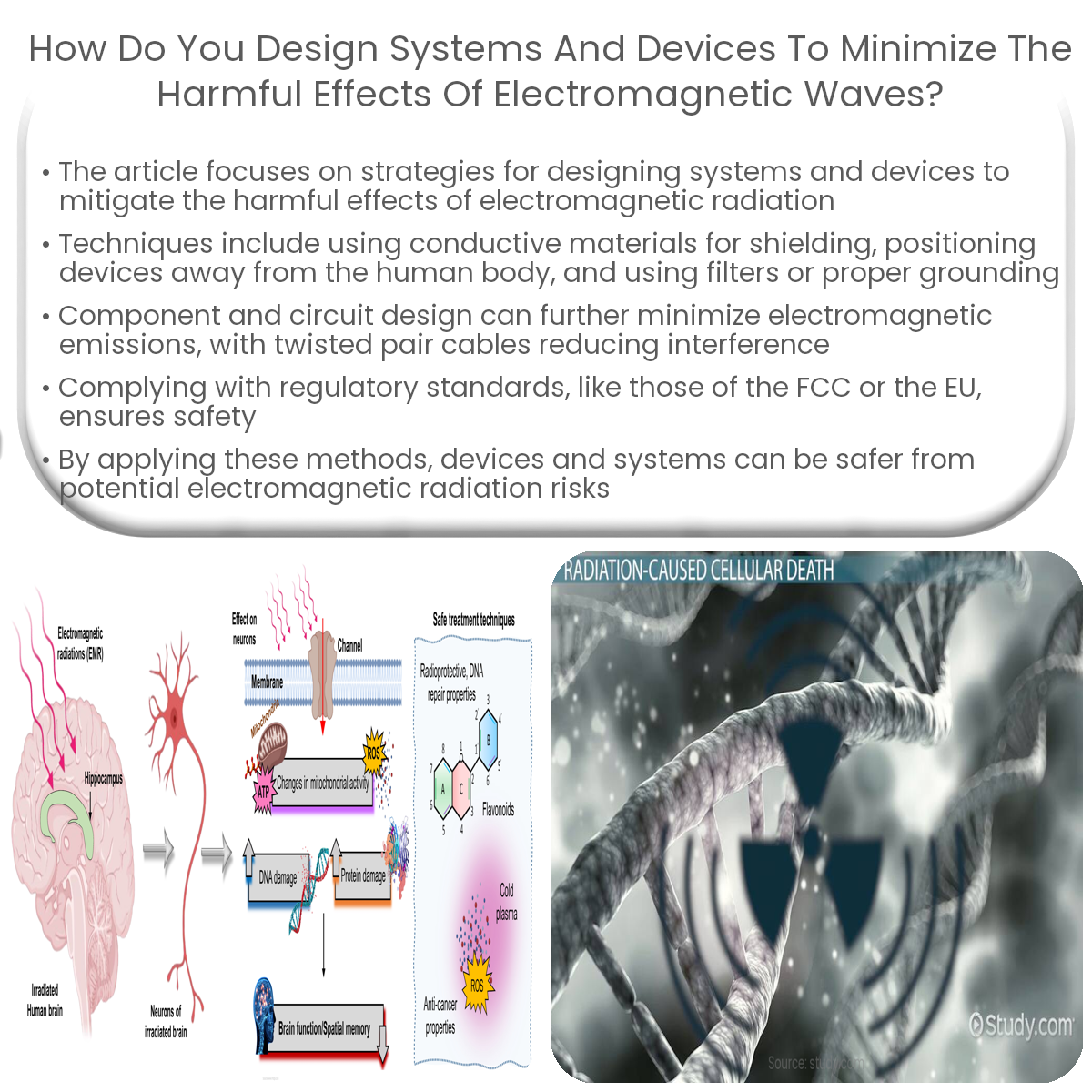To minimize harmful electromagnetic waves, use shielding, maintain distance, apply filters, optimize circuit design, and adhere to regulations.
Designing Systems and Devices to Minimize the Harmful Effects of Electromagnetic Waves
Electromagnetic waves are an integral part of our daily lives, given the prevalence of communication and electronic devices. However, concerns have been raised about the potential harmful effects of electromagnetic radiation on human health. This article explores various strategies for designing systems and devices to minimize these harmful effects.
1. Shielding and Enclosures
-
Use of conductive materials: Utilize conductive materials such as metal sheets or metal meshes to create enclosures around devices or circuits, attenuating the electromagnetic waves that pass through them.
-
Ferrite beads: These materials can be placed on cables to absorb high-frequency electromagnetic waves, reducing their intensity and preventing them from reaching sensitive components.
2. Distance and Positioning
-
Keep distance from sources: Position devices and equipment at a safe distance from the human body or other sensitive systems to reduce the impact of electromagnetic waves.
-
Proper orientation: Ensure that antennas and other radiating devices are oriented in a way that minimizes the exposure of humans or sensitive components to electromagnetic waves.
3. Filtering and Grounding
-
Electromagnetic filters: Use of low-pass, high-pass, or band-pass filters to block specific frequency ranges of electromagnetic waves from entering or exiting devices.
-
Proper grounding: Implement effective grounding techniques to prevent the buildup of electromagnetic radiation and ensure that excess energy is safely dissipated.
4. Circuit and Component Design
-
Use of low-impedance paths: Design circuits with low-impedance paths to minimize the emission of electromagnetic waves from components and devices.
-
Twisted pair cables: Utilize twisted pair cables to cancel out electromagnetic fields generated by adjacent wires, reducing electromagnetic interference.
5. Compliance with Standards and Regulations
Design devices and systems in accordance with relevant standards and regulations, such as the FCC in the United States or the CE marking in the European Union, to ensure that electromagnetic emissions are within safe limits for human exposure and the environment.
Conclusion
In conclusion, minimizing the harmful effects of electromagnetic waves involves a combination of shielding, distance and positioning, filtering and grounding, circuit and component design, and compliance with relevant standards and regulations. By incorporating these strategies, we can create systems and devices that minimize the potential risks associated with electromagnetic radiation.


